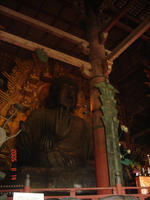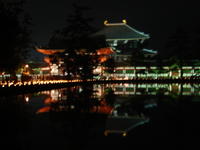網干祭り - Aboshi Matsuri

Another weekend, another festival. In the weekend after the Kenka Matsuri, there was another festival in Aboshi (guess it's some ward in Himeji city), the Utsuki Hachiman Jinja Aboshi Matsuri on October 21st and 22nd, 2005.
This festival also had some yatai (portable shrines), although I didn't noticed any mikoshi (the ones they clash during the Kenka) and there was a different one that I can't remember the name now which, unlike yatai, people don't carry it on their shoulders, but only pull it.
But the thing I really wanted to see in that matsuri was chouchin (some kind of traditional Japanese lantern) fight, i.e. men holding bamboo sticks with a chouchin attached smash the sticks against each other (against other STICKS, not against themselves). But I just figured on Friday morning that these kind of fight would happen only on Friday, so desperate calls telling everyone to change their schedules...
I went to that festival with the same group who went to the Kenka, but this time we met other (foreigner) friends there. We were near the chouchin fight place, however we could only see it from a certain distance... Although the festival wasn't so crowded as the Kenka, near the fight was even more than it, perhaps... I even tried to get closer and take some pictures, but after being pushed, pulled, compressed and thown a couple of times I gave up. Some people of the group did manage to get closer, though. Maybe I'm losing my ability to walk through crowded places...
Well, according to what Silvia posted in her blog (she managed to get close enough of the thing) one person goes in the middle of the circle and then he starts to sing and ask everybody to fight, then people holding the lanterns gather and start to smash the bamboo sticks into the lanterns. It is dangerous to people who are watching it because of the flying bamboo and chouchin fragments which sometimes hit people who are nearby. Why many of fall's festivals are fight-oriented, I wonder... Stress relieving? XD
Also, just one note... Digital cameras are really bad to take pictures at night...
The festival ended a little later than I was expecting. No time to get the last bus to Shosha... and it's cold at night lately... Already like winter in my Brazilian hometown... (How could some people wear only mawashi?) So some of us stopped at a friend's house in Aboshi talking and drinking (yes, I drank a little this time... but my resistance is still low and I continue preferring juice to alcohol).












